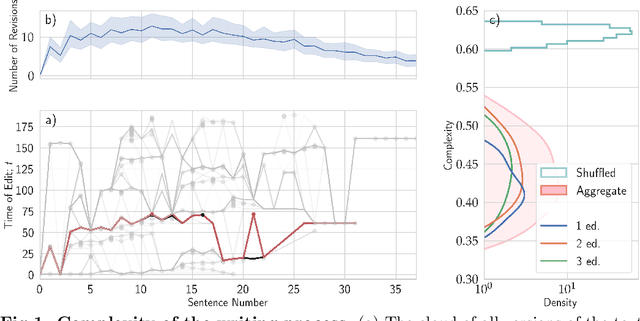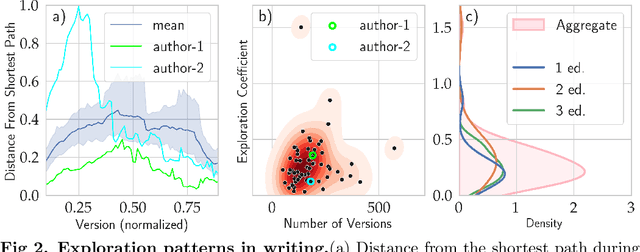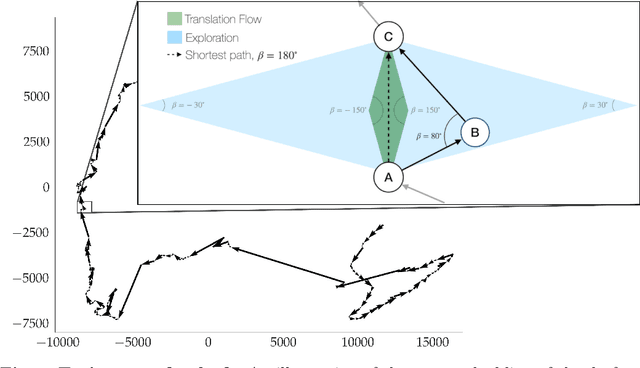Pietro Gravino
Exploitation and exploration in text evolution. Quantifying planning and translation flows during writing
Feb 08, 2023



Abstract:Writing is a complex process at the center of much of modern human activity. Despite it appears to be a linear process, writing conceals many highly non-linear processes. Previous research has focused on three phases of writing: planning, translation and transcription, and revision. While research has shown these are non-linear, they are often treated linearly when measured. Here, we introduce measures to detect and quantify subcycles of planning (exploration) and translation (exploitation) during the writing process. We apply these to a novel dataset that recorded the creation of a text in all its phases, from early attempts to the finishing touches on a final version. This dataset comes from a series of writing workshops in which, through innovative versioning software, we were able to record all the steps in the construction of a text. More than 60 junior researchers in science wrote a scientific essay intended for a general readership. We recorded each essay as a writing cloud, defined as a complex topological structure capturing the history of the essay itself. Through this unique dataset of writing clouds, we expose a representation of the writing process that quantifies its complexity and the writer's efforts throughout the draft and through time. Interestingly, this representation highlights the phases of "translation flow", where authors improve existing ideas, and exploration, where creative deviations appear as the writer returns to the planning phase. These turning points between translation and exploration become rarer as the writing process progresses and the author approaches the final version. Our results and the new measures introduced have the potential to foster the discussion about the non-linear nature of writing and support the development of tools that can support more creative and impactful writing processes.
On the emergence of syntactic structures: quantifying and modelling duality of patterning
Feb 11, 2016



Abstract:The complex organization of syntax in hierarchical structures is one of the core design features of human language. Duality of patterning refers for instance to the organization of the meaningful elements in a language at two distinct levels: a combinatorial level where meaningless forms are combined into meaningful forms and a compositional level where meaningful forms are composed into larger lexical units. The question remains wide open regarding how such a structure could have emerged. Furthermore a clear mathematical framework to quantify this phenomenon is still lacking. The aim of this paper is that of addressing these two aspects in a self-consistent way. First, we introduce suitable measures to quantify the level of combinatoriality and compositionality in a language, and present a framework to estimate these observables in human natural languages. Second, we show that the theoretical predictions of a multi-agents modeling scheme, namely the Blending Game, are in surprisingly good agreement with empirical data. In the Blending Game a population of individuals plays language games aiming at success in communication. It is remarkable that the two sides of duality of patterning emerge simultaneously as a consequence of a pure cultural dynamics in a simulated environment that contains meaningful relations, provided a simple constraint on message transmission fidelity is also considered.
 Add to Chrome
Add to Chrome Add to Firefox
Add to Firefox Add to Edge
Add to Edge